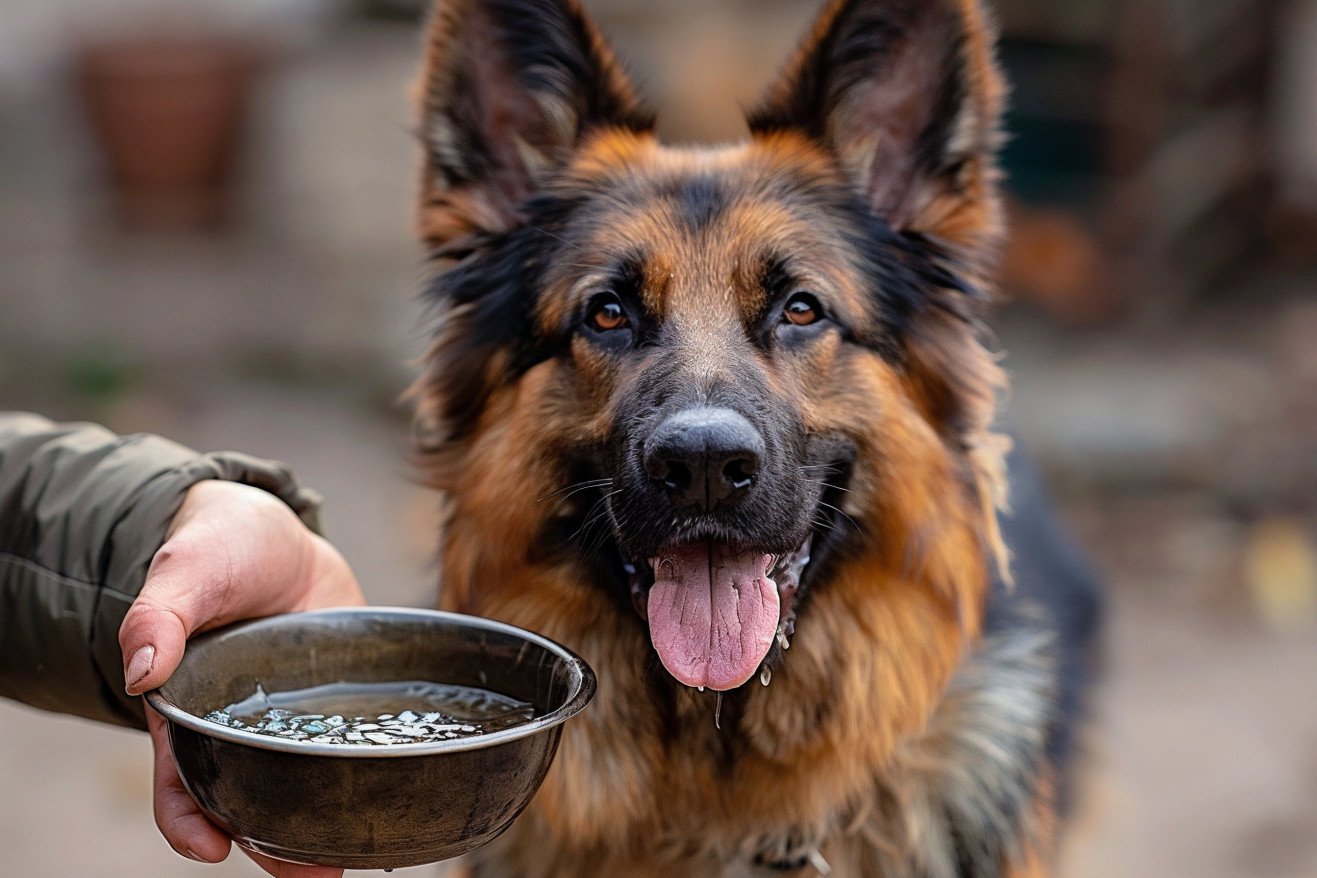How to Help a Dog Stop Panting: Expert Advice and Methods
1 May 2024 • Updated 1 May 2024

What causes heavy panting in dogs and how can you safely help them stop? You can help a panting dog by making sure they are in a cool, shaded area, giving them water, and making sure you are calm so that you don't add to their stress. While some common causes of panting include exercise, heat, fear, and anxiety, heavy panting can also be a sign of a medical problem that needs to be addressed by a vet.
As concerned pet parents, we'll take a look at evidence-based ways to determine why your dog is panting and practical solutions for helping a dog that is overheated or anxious. Drawing on the most up-to-date information from veterinarians and animal behaviorists, we'll walk you through how to track your dog's panting, eliminate serious health issues, and use calming methods to help your furry friend feel better.
How can I help my dog stop panting?
How to Tell If Your Dog Is Experiencing Heat Exhaustion and Overheating
Heat exhaustion and overheating are two of the most common reasons for dogs to pant excessively. Dr. Weisberg explains that signs of overheating include heavy panting, excessive drooling, wobbliness, and a change in gum color. While a dog's normal temperature is between 101-102.5°F, anything above 105°F is a sign that they need to see a vet immediately, according to Noah's Ark Veterinary Clinic.
There are certain dog breeds that are more prone to overheating. Brachycephalic breeds, such as bulldogs and pugs, have shorter snouts that make it harder for them to cool down by panting. Small Door Veterinary also notes that dogs with long, thick coats are at a higher risk. If not addressed, overheating can quickly lead to heatstroke, which can be fatal. It's important to recognize the signs of overheating and seek help before it gets to that point.
How to Cool Down a Dog With Heatstroke: A Step-by-Step Guide
If you suspect your dog is suffering from heatstroke, it's important to act quickly to cool them down. The RSPCA recommends moving the dog to a shaded, cool area and pouring cool (not cold) water over the dog's body to gradually lower their temperature. Avoid using cold water or ice, which can make the situation worse and lead to other health issues.
You can also offer the dog small amounts of cool water to drink, but don't force them to drink. The American Kennel Club also suggests continuing to cool the dog until their temperature drops to around 103°F. At that point, you should stop and seek veterinary help, as dogs with severe heatstroke may need to be treated with fluids, drugs, and oxygen.
By following these guidelines to gradually and safely lower a dog's body temperature, you can help prevent heatstroke, which can be fatal. However, if the dog's symptoms don't improve or you have any other concerns, it's important to take them to the vet as soon as possible.
How to Reduce Dog Panting Due to Anxiety
Anxiety and stress can also cause dog panting. MasterClass notes that dogs can experience anxiety, and there are ways to calm them down. Natural remedies like CBD oil, herbs, homeopathic remedies, and essential oils can help reduce anxiety.
CBD oil works by interacting with the endocannabinoid system in the body, which is responsible for regulating the nervous system. This can help reduce anxiety and stress in dogs. Herbs like chamomile, valerian, and St. John's Wort can also help reduce anxiety. Homeopathic remedies like Aconite, Phosphorus, and Pulsatilla can help with specific symptoms of anxiety.
The American Kennel Club lists desensitization, music, and pheromone therapy as other ways to reduce anxiety in dogs. In addition, a regular schedule, exercise, and mental stimulation can help reduce anxiety. However, it's important to note that to truly reduce anxiety, you'll need to figure out what's causing it and address that issue.
When to Take Your Dog to the Vet for Panting
While panting is a normal behavior in dogs, excessive or abnormal panting can be a sign of a more serious issue that needs to be addressed by a veterinarian. According to Plains Vets, signs that you should take your dog to the vet include sudden onset of panting, pale or blue gums, open-mouthed resting breathing, and reluctance to move.
Causes of abnormal panting can include respiratory issues, infections, lung problems, pain, and medication reactions. The Advanced Care Animal Clinic notes that a vet will conduct a physical exam and may run tests like X-rays to figure out the cause of the panting and how to treat it.
If your dog is experiencing excessive panting that doesn't go away or is happening in conjunction with other symptoms, it's important to take them to the vet. TexVetPets points out that any process that causes an increase in the respiratory rate, such as heart failure, lung diseases, or metabolic issues, can cause abnormal panting that needs to be treated by a vet.
Keeping Dogs Cool and Reducing Stress
Keeping dogs cool and reducing stress are two of the most effective ways to reduce heavy panting in dogs. The American Kennel Club recommends making sure your dog has access to water, shade, and rest when they’re outside in hot weather or exercising. In addition, using cooling items like cooling vests or mats can help keep your dog’s body temperature in check.
The AKC also suggests acclimating your dog to hot weather and never leaving your dog in a hot car or other enclosed space, as this can lead to overheating in a matter of minutes. Meanwhile, creating a calm, safe environment for your dog by reducing noise, giving them a safe place to go, and sticking to a regular schedule can help reduce stress and anxiety, which can lead to heavy panting, according to PetMD.
Conclusion: How to Help Your Dog
There are many reasons why a dog may be panting more than usual, from the temperature and exercise to anxiety and other medical problems. It's important to know the signs of overheating and how to cool your dog down to prevent heatstroke. There are natural ways to help an anxious dog, and these may also help reduce panting.
However, if your dog continues to pant excessively and especially if other symptoms are present, it's important to take them to the vet. The reasons for abnormal panting can be anything from respiratory issues and infections to lung disease, pain, and side effects from medication. A vet can help you figure out what's going on and how to treat it.
By learning your dog's normal panting habits and taking steps to help them, you can make sure your dog is as comfortable and healthy as possible. This includes making sure they have water, shade, and time to rest when it's hot or after they've been exercising and creating a safe, calm environment that reduces anxiety.


